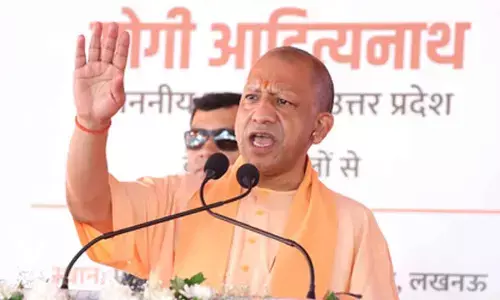Hyderabad: Official says Air pollution poised to be moderate

Air pollution poised to be moderate
A major cause of bad air is temperature inversions which usually occur when warm sun rises over a mountain range and heats the air above a city. The result is polluted air doesn't rise because cool air below won't rise through heated air
Hyderabad: Winter season always comes with a wave of air pollution and it has not given a miss this year, too. Hyderabadis are breathing through thick blankets of smog in the shivering winter with unhealthy pollution fine particles hanging low.
"Concentration of pollution particles in Hyderabad has intensified currently. If we are trying to predict about the situation in the next four months, it is going to be moderate only. Basically, the winter season of four months, from November to February or (October to January), is crucial for air pollution. Moreover, the pollution concentration on the roads could be seen from mid-October every year, but as the lockdown favoured the environment and also because of extended monsoons and taking other factors into consideration, we are not expecting a very high pollution hazards for Hyderabad this time," said D Prasad, Environmental Scientist (Air), TSPCB.
Hyderabad being a plain area it is not always highly affected by pollution. Regional aspects favour the city to keep pollution low. Although the annual average of air pollution might be coming down, due to lockdown effect, the city is going to observe moderate air pollution as always, as it is getting back to normalcy gradually. "However, we are already on the moderate level of pollution. We all need to stop polluting the city to safeguard ourselves from the high concentrations of pollution in the city," Prasad added.
A major cause of bad air is temperature inversions which usually occur when warm sun rises over a mountain range and heats the air above a city. The result is that polluted air doesn't rise out of the city because cool air below won't rise through the heated air. Another cause is chemical reactions called photochemical smog. Large molecules from fuels that did not burn well are broken up into toxic chemicals by chemical reactions that are triggered by hot sun rays. For instance, sulphur in burning fuels, especially coal, eventually becomes acid rain. On hot days, the chemical reactions that create the acid occur more quickly. In winter, the slowness of chemical reactions allows more time for chemicals like hydrocarbons and sulphur dioxide to disperse before chemical reactions can turn them into smog and acid. In other words, they get further away from cities where they are created and they mix with cleaner air as they move away creating pollution.














